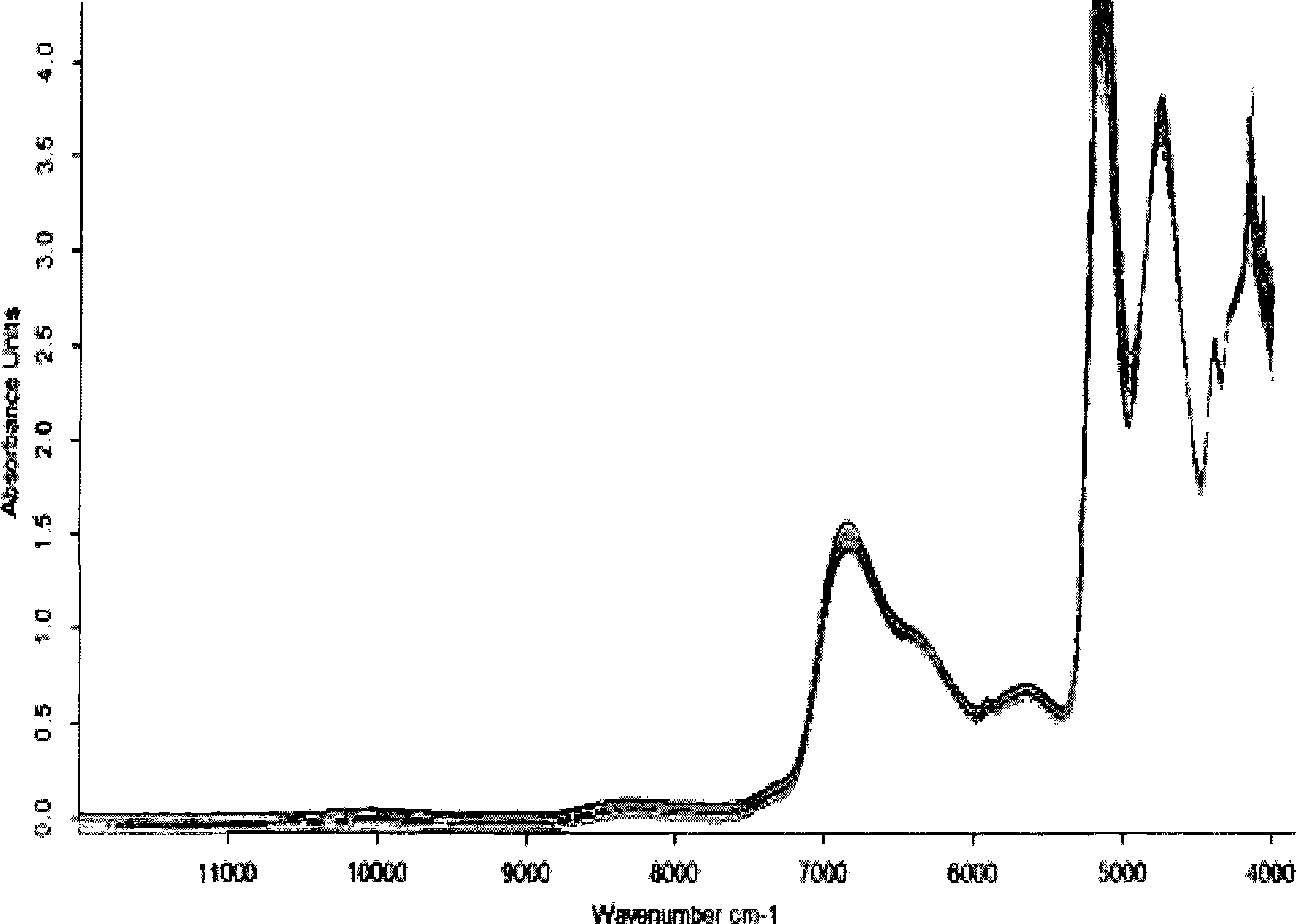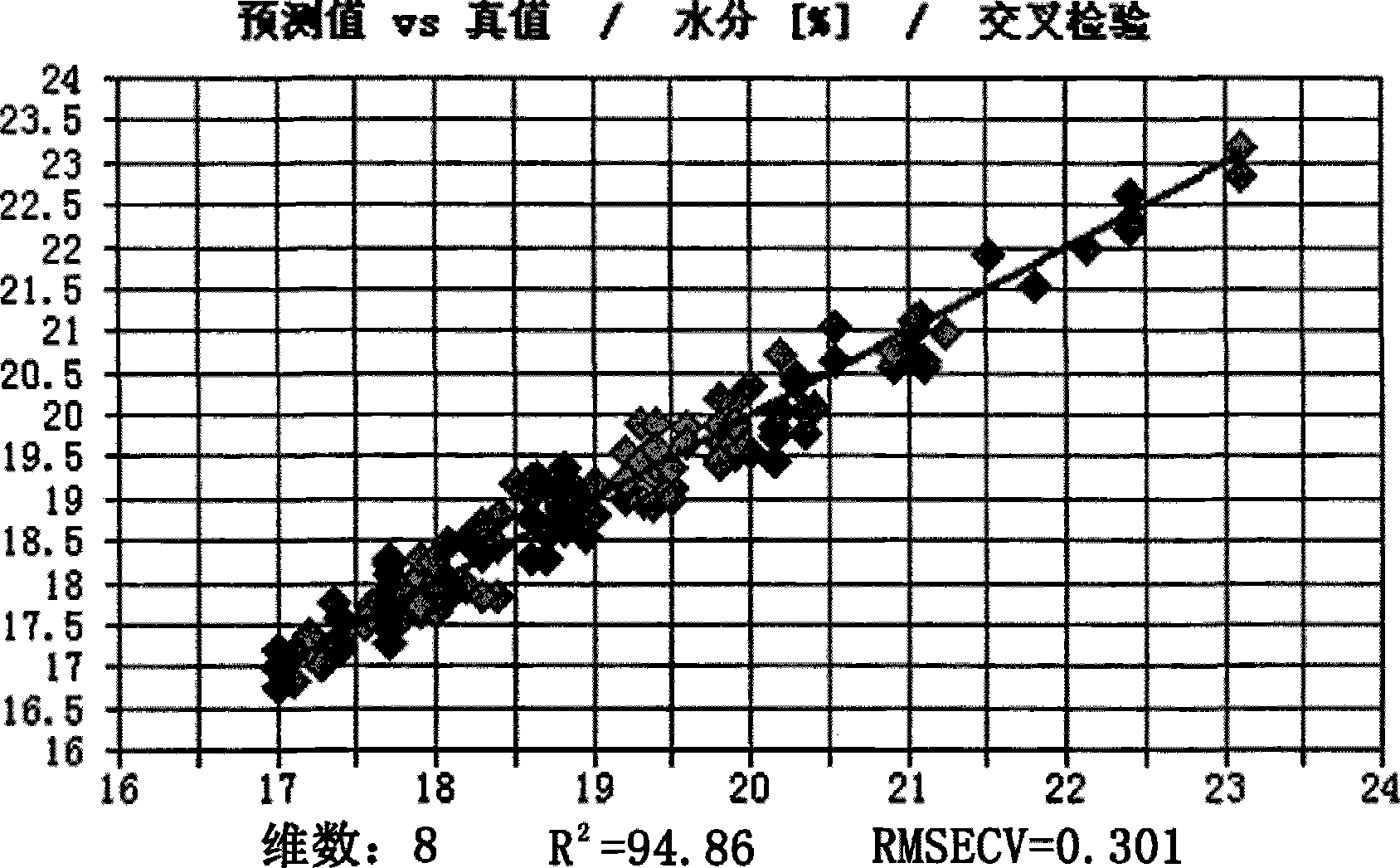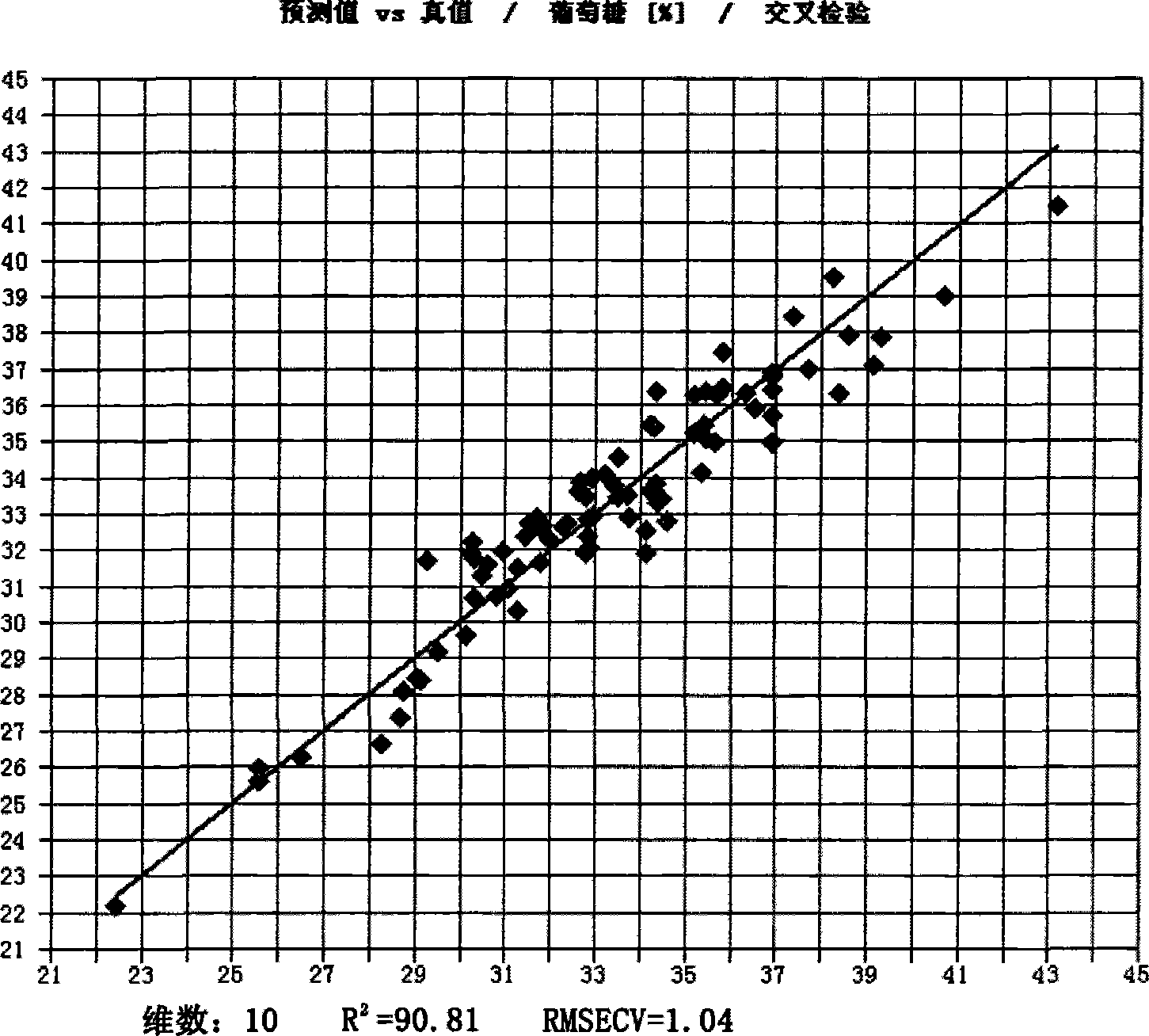Near-infrared spectrum method for rapidly quantifying honey quality
A technology of near-infrared spectroscopy and honey, which is applied in the field of spectroscopy to quantify the quality of honey, can solve the problems of a large number of reagents, affecting the efficiency of honey analysis, time-consuming, etc., and achieve the effects of fast analysis speed, reliable results, and simple pretreatment
- Summary
- Abstract
- Description
- Claims
- Application Information
AI Technical Summary
Problems solved by technology
Method used
Image
Examples
Embodiment 1
[0037] The near-infrared spectrogram of embodiment 1 honey sample
[0038] At least 50 samples (obtained from the market) were collected and randomly divided into a calibration set and a validation set (3:1). Crystallized honey was bathed in 40°C water until it was completely liquefied before analysis, and then placed at room temperature. Using Fourier transform near-infrared spectroscopy instrument and liquid fiber optic accessories to scan honey samples, the light source is tungsten-halogen lamp, indium gallium arsenic (InGaAs) detector, scanning range: 10000cm -1 ~4000cm -1 . Number of scans: 32 times, resolution: 8cm -1 . Each sample was measured in parallel 3 times, and the average spectrum was taken (see figure 1 ).
Embodiment 2
[0039] Embodiment 2 honey moisture model
[0040] 2.1 Moisture model establishment
[0041] According to the GB18796-2005 honey standard, the moisture content of the honey sample of Example 1 was measured by the refractive index method, and the OPUS5.5 software was used to carry out second-order derivative spectral preprocessing on the sample spectrum collected in Example 1, and the partial least squares method was used to establish Mathematical model, carry out cross-validation to the model, obtain moisture NIR prediction value and true value cross-test figure (see figure 2 ). coefficient of determination (R 2 ) reached 94.86, and the cross-validation mean square error (RMSECV) was 0.301.
[0042] 2.2 Moisture model test
[0043] The established model was used to predict the water content of the honey sample. The predicted results and the national standard method and their deviations are shown in Table 1. The root mean square error of prediction (RMSEP) was 0.324. Thro...
Embodiment 3
[0047] Example 3 Honey Glucose Model
[0048] 3.1 Glucose model establishment
[0049] According to the GB 18796-2005 honey standard, the glucose content of the honey sample of Example 1 was measured by liquid chromatography, and the OPUS5.5 software was used to subtract a straight line spectrum pretreatment from the sample spectrum collected in Example 1, using partial least squares Multiplication establishes a mathematical model, cross-validates the model, and obtains a glucose NIR prediction value and a true value cross-validation figure (see image 3 ). coefficient of determination (R 2 ) reached 90.81, and the cross-validation mean square error (RMSECV) was 1.04.
[0050] 3.2 Glucose model test
[0051] The established model was used to predict the glucose of honey samples. The prediction results and the national standard method measurement results and their deviations are shown in Table 2. The root mean square error of prediction (RMSEP) was 1.09. The paired T test s...
PUM
 Login to View More
Login to View More Abstract
Description
Claims
Application Information
 Login to View More
Login to View More - R&D
- Intellectual Property
- Life Sciences
- Materials
- Tech Scout
- Unparalleled Data Quality
- Higher Quality Content
- 60% Fewer Hallucinations
Browse by: Latest US Patents, China's latest patents, Technical Efficacy Thesaurus, Application Domain, Technology Topic, Popular Technical Reports.
© 2025 PatSnap. All rights reserved.Legal|Privacy policy|Modern Slavery Act Transparency Statement|Sitemap|About US| Contact US: help@patsnap.com



